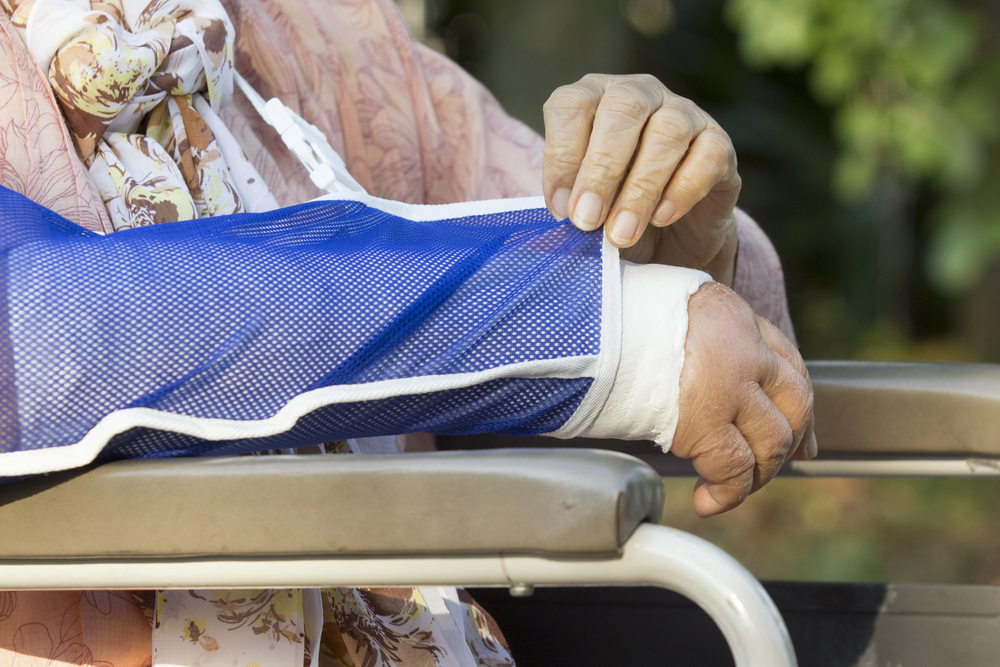Can You Get Sepsis From a Broken Bone?
Sepsis is a life-threatening condition that happens when the body has an extreme reaction to an infection. Usually, your body fights off infections to keep you healthy, but with sepsis, your immune response goes into overdrive and attacks your organs and tissues.
This extreme response can cause widespread inflammation, leading to organ failure and, in severe cases, death. Even more alarming, it doesn’t take long to die from sepsis once you reach the advanced stages.
The Connection Between Broken Bones and Sepsis
When a bone breaks, especially in severe cases or open fractures where the bone pierces the skin, there’s a higher risk of infection. Infections typically occur after traumatic injuries as bacteria enter the wound, especially in the case of open fractures.
However, patients can develop sepsis when the body has an extreme response to the infection.
Open Fractures and Infection Risk
An open fracture, or compound fracture, happens when a bone breaks through the skin. It can occur when bone fragments stick outside the skin or the wound is so deep that it reveals the bone underneath the soft tissues.
This creates a direct pathway for bacteria to enter the bloodstream, which increases the risk of infection and post-traumatic sepsis.
Surgical Site Infections
A compound fracture is a surgical emergency requiring surgeons to clean out as much contamination as possible from the wound, including dirt and bone fragments.
However, even with sterilized tools and clean environments, infections can develop in the tissue around the surgical area during or after the surgery.
If the contamination spreads from the infected tissue to other areas of the body and it’s not treated on time, it can lead to postoperative sepsis. This is also why patients usually receive preventative antibiotics before orthopedic surgery.

Risk Factors for Infection
Nursing home residents with broken bones are at higher risk of infection when the following factors are involved:
- Chronic diseases – Illnesses such as diabetes may slow down wound healing, which is especially dangerous when the wound penetrates deep into the tissue. The longer a wound takes to heal, the higher the risk of infection.
- Poor wound care – This involves poor wound cleaning, which can lead to infection. An infected wound may be red, painful, swollen, and draining pus.
- Weakened immune system – Chemotherapy, medications, or underlying illnesses weaken the immune system, making it harder for the body to fight infections.
- Poor nutrition – If the body lacks nutrients, vitamins, and minerals, trauma patients will have a more challenging time healing.
- Smoking – Smoking slows down wound healing and weakens the person’s immunity.
- Existing infections – Existing infections such as pulmonary or urinary tract infections can strain the immune system, making it less effective.
Recognizing Signs and Symptoms of Sepsis
Nursing home staff must pay close attention to residents with fractured bones to notice ongoing problems on time and prevent them from becoming worse.
Common early symptoms of sepsis include:
- Fever and hypothermia – Body temperature that is too high or low, often accompanied by shaking and chills.
- Rapid heart rate – The heart beats faster to deliver oxygen to organs struggling due to sepsis.
- Confusion – Confusion, agitation, or an altered mental state.
- Hyperventilation – Shortness of breath or rapid breathing.
Specific Symptoms Related to Bone Infections
The symptoms of a bone infection may be localized, including redness, swelling, warmth, increased pain around the fracture site, and difficulty moving the infected limb. Pus can also drain from the wound.
If the infection isn’t noticed and treated quickly, the person may suffer complications, including sepsis.
Importance of Prompt Medical Attention
Any sign of sepsis after a fracture is a serious medical emergency. Early diagnosis and treatment can save lives and prevent more severe immune responses as sepsis progresses rapidly.
A bone infection can lead to more severe infection, sepsis, and septic shock if not successfully treated. This is highly dangerous, as septic shock can cause death in as little as 12 hours.
Nursing Home Residents and Increased Risk of Sepsis
A broken bone can be more dangerous for an elderly person, especially if they are in a nursing home. Not only are they at greater risk of sepsis due to their age, but also because they live in close quarters with other residents, which increases the risk of spreading infections.
Vulnerability of Elderly
Older adults, especially those living in nursing homes, are more susceptible to infections and sepsis. Adults over the age of 65 are 13 times more likely to need hospitalization due to sepsis. [1] Older adults are more likely to have one or more risk factors:
- Weakened immune function
- Catheters, IVs, and breathing tubes
- Other infections
- Underlying health conditions
- More likely to need hospital admission, risking a healthcare-acquired infection
Challenges in Recognizing Sepsis in the Elderly
Diagnosing sepsis in older adults is difficult because their symptoms can be more subtle and often hidden by other health problems. In other words, classic signs of sepsis in younger individuals may not be present in nursing home residents with sepsis.
For example, more common symptoms in older adults may include lethargy, rapid breathing, loss of appetite, dehydration, weakness, dizziness, falls, and incontinence. Also, they might only have a mild temperature change or hypothermia instead of having a high fever.
What makes timely diagnosis even more challenging is that many of these symptoms overlap with symptoms of underlying illnesses that are common in older adults, especially heart disease and dementia.
Importance of Vigilance and Timely Intervention
Nursing home staff must monitor residents with broken bones to prevent infection from developing or worsening and turning into sepsis. They are also obligated to immediately notify the resident’s physician about any possible infection.
Since sepsis progresses fast, noticing the signs early can prevent patients from developing severe sepsis and suffering complications. In some cases, septic patients may need to have the infected limb amputated, or their risk for future infections increases.
Timely intervention is key, as sepsis-related mortality rates range between 30% and 40% once the patient is in septic shock. [2]
Legal Implications of Sepsis from Bone Breaks in Nursing Homes
A nursing home resident developing sepsis after a fracture may be a sign of improper care or negligence. If the nursing home fails to comply with care standards and regulations, it may face legal consequences.
Nursing Home Negligence
Negligence occurs when someone fails to provide reasonable care, leading to harm.
If a nursing home fails to prevent, treat, or report infections in a resident with a broken bone, it may be considered negligent. This means you can file a legal claim against the home, seek compensation, and pressure the facility to improve its standard of care.
Here are some examples of negligent behavior:
- Failure to clean or dress a wound properly
- Failure to recognize the signs of infection
- Poor hygiene of the wound
- Failure to administer antibiotic therapy according to standards
- Failure to report a suspected infection
Proving Negligence
To file a claim against the nursing home, you must prove its negligence. To do that, you must prove the following four elements of negligence:
- Duty of care – The nursing home had a legal obligation to provide a reasonable standard of care.
- Breach of duty – The nursing home failed to meet the expected standard of care. For example, it failed to treat the wound, monitor for signs of infection, made medication errors, or failed to contact a physician on time.
- Causation – You must show that the breach of duty directly caused harm or damages to the resident. In other words, there must be a clear link between the facility’s actions or inactions and the damages the resident suffered.
- Damages – The fourth element of proving negligence is damages. Damages include medical expenses, pain and suffering, harm to the resident’s health, and, in severe cases, death.

Seeking Compensation for Damages
If a family member developed sepsis after a broken bone or another traumatic event in a nursing home due to the facility’s negligence, you may have the right to seek compensation.
Compensation may cover various losses, including medical expenses related to treating the infection and sepsis, hospital stays, medications, and ongoing care. Beyond the financial costs, families may also seek compensation for pain and suffering, recognizing the emotional and physical distress that the resident endured due to the negligence.
In the most tragic situations, where sepsis leads to death, families can file wrongful death claims. In wrongful death claims, families seek compensation for medical costs, the emotional toll of losing a loved one, funeral expenses, and the loss of companionship and support.
Secure Expert Legal Representation
If you have any reason to suspect your loved one developed sepsis due to their nursing home’s negligence, we can help you investigate the case and file a compensation claim.
A nursing home abuse and negligence lawyer can guide you through the process and ensure you understand your rights. Lastly, holding the nursing home accountable can force it to improve its care and protect future residents from the same pain.
The Nursing Home Law Center is an organization dedicated to protecting the rights of older adults, with a network of experienced, dedicated attorneys. Contact us online for a free consultation, and an attorney will contact you within one day. If you need immediate help, call us at (800) 926-7565. You don’t need to pay a fee unless the lawyer wins your case.
References: [1] Sepsis.org, [2] Mayo Clinic

